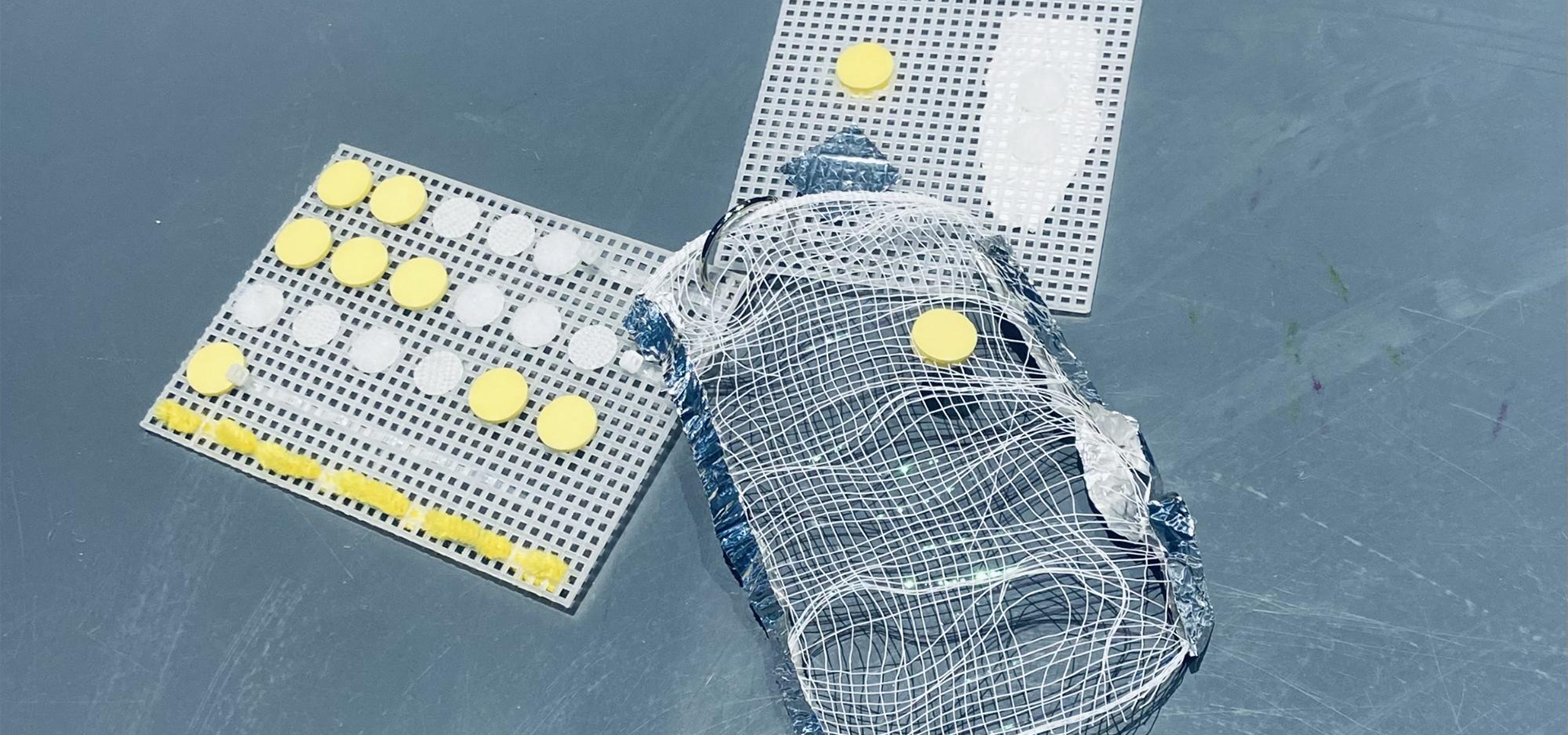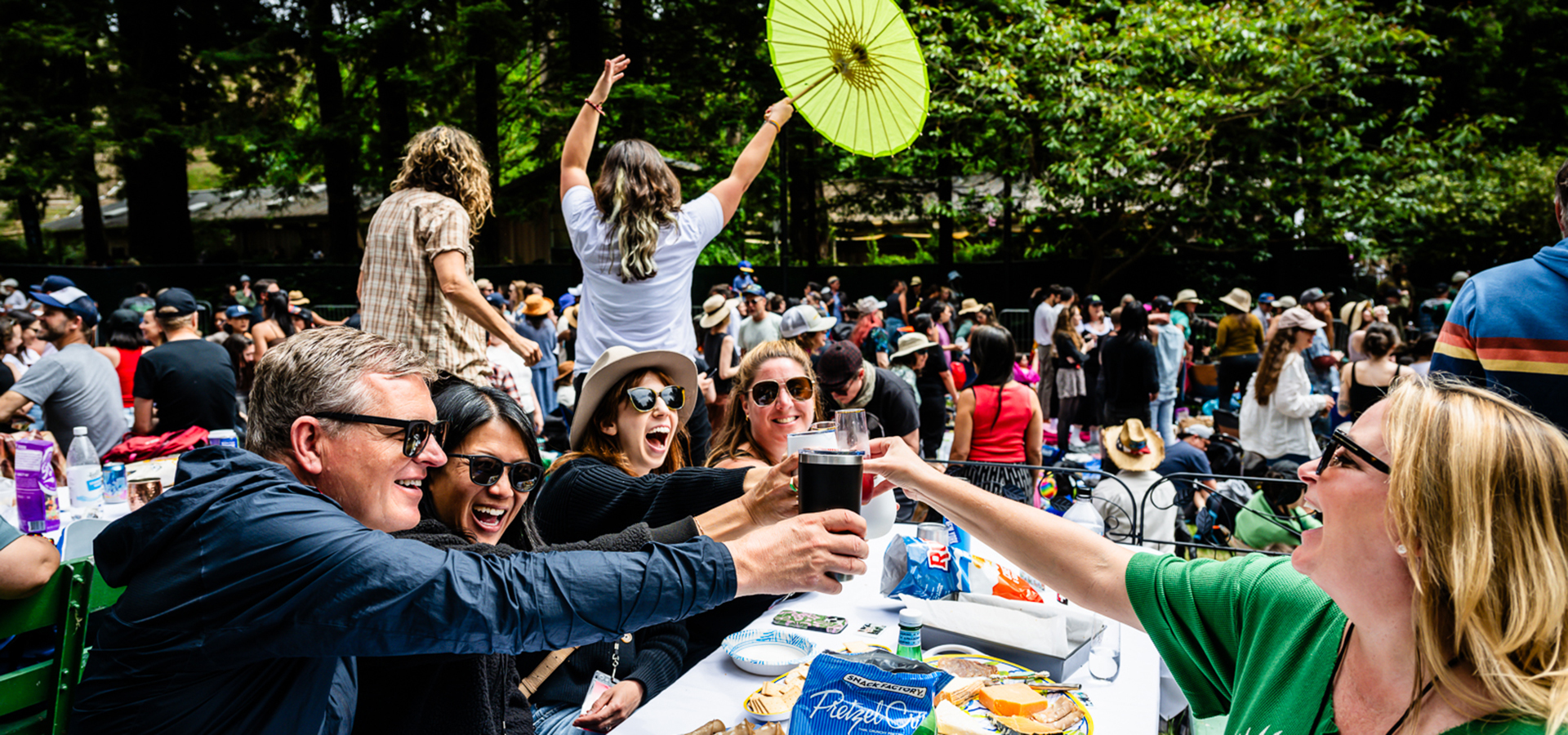
A Robot Made It, First with Rae Lanzerotti


RECOMMENDED AGE LEVEL
Recommended for all ages, 5 and under with adult supervision.
PROJECT DESCRIPTION
Rae Lanzerotti is an artist and somatic teacher from San Francisco. They make zines and comics as well as tactile art, using mixed media to expand disability access and aesthetics. Fascination with “access as art” since vision loss led Rae to graphic memoir, bookmaking, collaborative audio comics and zines, puff painting, and experiments with hardware. They have not (yet) made a comic with a robot character in it, and yet a robot has helped them write and read comics!
Rae Lanzerotti’s tactile artworks and innovative comics invite multi-sensory, accessible experiences.
This MakeArt Project asks you to reflect on the tactile work and delight of art, an iterative exchange with human makers and robotic fabricators. We recreate and describe assembled art objects in tactile and audible ways.
MATERIALS
- Mesh panels | Rug pad, tulle, paper mesh, or plastic mesh
- Embellishments | Felt, foam, sandpaper, stickers, velcro, zip ties, chenille stems, beads, string, yarn, ribbon, etc.
- Adhesives | Glue dots, stapler, tape, or glue.
- Scissors
- Binder Ring
INSTRUCTIONAL VIDEOS
Follow along as Rae Lanzerotti and MCD narrate their creative approaches!
VISUAL STEP BY STEP
DESIGN THINKING PROMPTS
- Using dimensional materials, we create specific textures and shapes to reproduce artworks in a new, tactile form.
- Practicing sensory and image description of artworks expands how we relate to art and with each other.
- Iterative art— like a game of creative telephone started by human designers, fabricated by a robot, and then recreated by us— encourages curiosity and reflection about the process and purpose of making art.
INSTRUCTIONS
- Select elements from Mr. Roboto featured artwork 3D Printed Textiles that you would like to recreate using tactile art materials.
- Choose mesh panels (and cut if desired.) How do the materials vary?
- Tip: The edges of fragile mesh will fray. Leave a border of at least ½ inch or reinforce the perimeter to make it stronger.
- Attach materials to your mesh panels to create an “assemblage” (a collage design using objects) on each panel.
CREATIVE PROMPTS FOR MORE
- Make a booklet! Use a binder ring in one corner to attach your mesh panels. Reorganize your book any time by changing the panel order.
- Let each panel speak for itself! Attach ribbon or string to each separate panel so they can be hung up like an ornament or wall art.
ROBOTIC REFLECTIONS
Reflect on remaking art that a robot made first. OPTIONAL: Write, record, and share your answers and ideas:
- What part of the robot’s art inspired what you are making?
- What textures, shapes, and colors do you like?
- What other, everyday objects can you think of that have interesting textures?
SIMULATING STORYTELLING
Tell a story about your art by talking to a human or a machine. OPTIONAL: Write, record, and share your answers and ideas. Questions to get you started:
- Describe your art. Consider its texture, shape, color, size, and line. How does it feel and look? How does it sound? When you touch different surfaces or sides, what do you notice?
- If you attached your panels to make a book, describe the story. What story does the book tell? What is the title of the book? If you rearrange the order of your panels, how does the story change?
- How can talking about art with each other change what we notice or experience?
- When we describe art to each other, what kinds of things do we usually include or leave out?
- What does it mean to you to collaborate or cooperate with others when making art?
- In the future, if you were to ask a robot to recreate what you’ve made, how would you collaborate to do this?
- What are some differences and similarities between what humans and robots can make? Do you think it changes art when humans work with robots to make it?
RAE’S BOOK RECOMMENDATIONS
For Adults:
- What Can a Body Do? How we meet the built world, by Sara Hendren
- God, Human, Animal, Machine, by Meghan O’Gieblyn
- More Than Meets the Eye, Georgina Kleege
For Kids:
- Robot Dreams, by Sara Varon [wordless comic with a robot in it]
- The Wild Robot, series by Peter Brown [YA, fiction]
- Making Simple Robots, Kathy Ceceri [anybody can build a robot]















